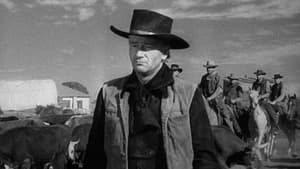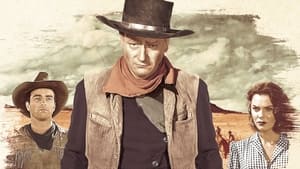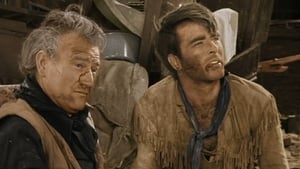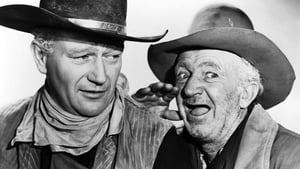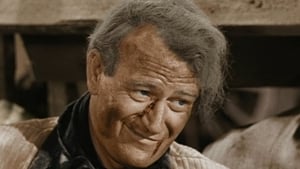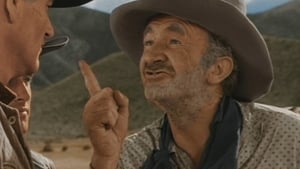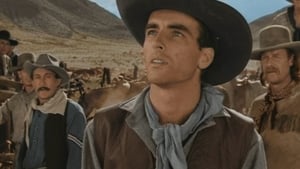Contact: [email protected]
Video Sources 0 Views
- Watch trailer
- Red River


Synopsis
Table of Contents
ToggleReview: Red River (1948) – A Classic Western Epic

Introduction
Red River, released in 1948, is a monumental achievement in the Western genre, directed by the legendary Howard Hawks. Renowned for its sweeping vistas, epic storytelling, and powerhouse performances, this classic film continues to captivate audiences with its portrayal of the rugged frontier and the men who tamed it. In this review, we’ll delve into the timeless beauty of Red River and its enduring legacy in the world of cinema.
Check The Full Colorized Movies List
Check Our Colorized Movies Trailer Channel
Understanding Red River (1948): Director, Cast, and Genre
Directed by Howard Hawks, Red River boasts an all-star cast led by John Wayne and Montgomery Clift. The film belongs to the Western genre, known for its iconic landscapes, themes of honor and redemption, and larger-than-life characters.
Exploring the World of Red River (1948): Plot and Characters
Red River tells the epic tale of Tom Dunson, a determined cattle rancher who leads a perilous cattle drive from Texas to Missouri along the historic Chisholm Trail. Along the way, Dunson’s iron-fisted leadership clashes with the independent spirit of his adopted son, Matthew Garth, leading to a dramatic showdown that tests the bonds of loyalty and family.
The Art of Film Colorization
While Red River was originally filmed in black and white, its early colorized version adds a new layer of richness to its sweeping landscapes and vibrant characters. The colorization process enhances the film’s epic scale and captures the rugged beauty of the American West with stunning clarity.
Early Colored Films: A Brief History
The history of early colored films is marked by innovation and experimentation as filmmakers sought to capture the beauty and majesty of the natural world. From hand-tinted frames to pioneering technicolor processes, the evolution of colorization techniques transformed the cinematic landscape, offering audiences a new way to experience the grandeur of the Western frontier.
Red River (1948) and Its Early Colored Version
The decision to release Red River in a colorized format was made with the intention of immersing audiences in the breathtaking beauty of its sweeping landscapes and vibrant characters. While some purists may prefer the original black and white version, the early colorized edition of Red River adds a new layer of depth to its epic storytelling and captures the rugged spirit of the American West with breathtaking clarity.
The Debate Over Film Colorization
The debate over film colorization continues to divide audiences and industry professionals alike. While some argue that colorization breathes new life into classic films and makes them more accessible to modern audiences, others maintain that it compromises the artistic integrity of the original work. As technology advances and filmmaking techniques evolve, the debate over colorization remains a topic of ongoing discussion within the film community.
Examining Red River (1948) as an Early Colored Film
Viewing Red River in its early colorized iteration offers audiences a fresh perspective on its sweeping vistas and vibrant characters. The colorization process enhances the film’s epic scale and captures the rugged beauty of the American West with stunning clarity. As viewers are drawn into the perilous journey of Tom Dunson and his cattle drive, they are treated to a visual feast that immerses them in the timeless beauty of the Western frontier.
Influence and Legacy: Red River (1948)’s Impact on Cinema
Red River is widely regarded as a classic of the Western genre that continues to inspire filmmakers and audiences alike. Its epic storytelling, breathtaking cinematography, and powerhouse performances have left an indelible mark on cinema, shaping the way Westerns are made and appreciated to this day.
Director’s Cinematic Legacy: Beyond Red River (1948)
Howard Hawks’ directorial legacy extends far beyond Red River, encompassing a diverse body of work that includes acclaimed films such as The Big Sleep and Rio Bravo. As one of the most respected filmmakers of his generation, Hawks was known for his ability to craft compelling narratives that explored the complexities of the human experience with depth and nuance. Red River stands as a testament to his talent and creativity, solidifying his reputation as one of the great auteurs of classic Hollywood cinema.
Themes Explored in Red River (1948)
At its core, Red River explores themes of loyalty, family, and the pursuit of a dream against the backdrop of the American West. Through its epic storytelling and unforgettable characters, the film offers a timeless exploration of the human spirit and the challenges of forging a new life in a rugged and unforgiving landscape.
Reception and Controversy Surrounding Red River (1948)
Upon its release, Red River received widespread critical acclaim for its epic storytelling, breathtaking cinematography, and powerhouse performances. While the decision to release the film in a colorized format sparked debate among purists, its enduring popularity has cemented its status as a timeless classic of the Western genre.
Where to Watch Red River (1948) Online
For those eager to experience Red River for themselves, the film is readily available on popular streaming platforms such as Amazon Prime Video, Google Play Movies, and iTunes. Whether viewed in its original black and white format or its early colorized iteration, Red River offers a cinematic experience that is both epic and visually stunning.
FAQs About Red River (1948)
1. Is Red River based on a true story?
No, Red River is a fictional film that tells the epic tale of a cattle drive along the historic Chisholm Trail. While the film’s storyline may draw inspiration from real-life events, its characters and plot are works of fiction.
2. Who starred in Red River?
Red River stars John Wayne in the role of Tom Dunson, a determined cattle rancher who leads a perilous cattle drive from Texas to Missouri. He is supported by Montgomery Clift, who delivers a memorable performance as his adopted son, Matthew Garth.
3. What is the central message of Red River?
At its core, Red River explores themes of loyalty, family, and the pursuit of a dream against the backdrop of the American West. Through its epic storytelling and unforgettable characters, the film offers a timeless exploration of the human spirit and the challenges of forging a new life in a rugged and unforgiving landscape.
4. Why was Red River released in a colorized format?
The decision to release Red River in a colorized format was made with the intention of immersing audiences in the breathtaking beauty of its sweeping landscapes and vibrant characters. While some purists may prefer the original black and white version, the early colorized edition of Red River adds a new layer of depth to its epic storytelling and captures the rugged spirit of the American West with breathtaking clarity.
5. What is the legacy of Red River?
Red River is widely regarded as a classic of the Western genre that continues to inspire filmmakers and audiences alike. Its epic storytelling, breathtaking cinematography, and powerhouse performances have left an indelible mark on cinema, shaping the way Westerns are made and appreciated to this day.
6. Are there any sequels or remakes of Red River?
No, there have been no official sequels or remakes of Red River. However, the film’s enduring popularity has inspired countless reinterpretations and homages in various media. Nonetheless, none have captured the epic scale and timeless beauty of the original 1948 classic.
7. Where can I watch Red River online?
For those eager to experience Red River for themselves, the film is readily available on popular streaming platforms such as Amazon Prime Video, Google Play Movies, and iTunes. Whether viewed in its original black and white format or its early colorized iteration, Red River offers a cinematic experience that is both epic and visually stunning.
Conclusion
In conclusion, Red River (1948) stands as a monumental achievement in the Western genre that continues to captivate audiences with its epic storytelling, breathtaking cinematography, and powerhouse performances. Whether viewed in its original black and white format or its early colorized iteration, Howard Hawks’ insightful direction and the stellar performances of the cast offer a cinematic experience that is both epic and visually stunning. As viewers are drawn into the perilous journey of Tom Dunson and his cattle drive, they are treated to a visceral exploration of loyalty, family, and the pursuit of a dream in the rugged landscape of the American West. Red River remains a timeless classic that continues to enthrall and inspire audiences around the world.
